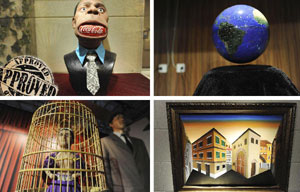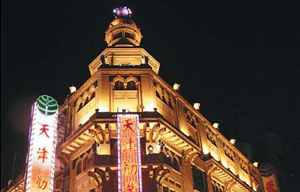Time to reflect
 |
|
New housing on Westerdok, a man-made island built in 19th-century Amsterdam. Photos provided to China Daily |
Amsterdam is a city rich in history and short on space. Russell Shorto revels in the quaint charms of the capital of the Netherlands.
The Haarlemmerstraat in Amsterdam is a narrow enough thoroughfare that from my office window I can easily see into the shops across the street. There is the olive oil boutique, with its rows of metal barrels and its sign inside saying, "Check Your Oil," and the coffee shop that young, nattily dressed tourists wander into to get licitly high. Looking up, I have to crane my neck to take in the succession of gable types on the brick facades - step, bell, spout - that signal the changing fashions among real estate developers during the city's golden age in the 17th century.
The Haarlemmerstraat is hardly unique. In a city that was essentially carved out of peat bogs, space has always been at a premium. Curiously, the earlier occupants of the building where I work (a few centuries earlier) had all the room in the world.
The building is called the West India House. In the 1600s the directors of the Dutch West India Company ran a business from here that extended to the Caribbean, South America and North America, and whose products included salt, timber, tar, sugar and slaves.
From this building they set up overseas outposts, one of which, New Amsterdam, they located at the southern tip of Manhattan Island. I like to think of their meeting room, across the courtyard from my office, as the place where New York City was conceived.
I work in the West India House which houses an American culture center called the John Adams Institute, which, when it was founded 25 years ago, was located here because of the building's historic connection to America.
 |
| Cyclists and pedestrians enjoys a sunny day on Haarlemmerstraat. |
In the seven years I've lived in Amsterdam, I often find myself pondering the concept of space. For all the vastness of the world the Dutch once lorded over, they have restricted themselves to this small patch of it, a patch that remains cramped and ever threatened by water.
You could pick a neighborhood of the city at random, and you'd find that it would illustrate these two things: How Amsterdam has always reached outward, and how its inhabitants are constantly, often ingeniously, rebuilding, reinventing, repurposing their little corner of the Earth.
Take for example my lunchtime walk. If I turn right on the Haarlemmerstraat, I pass an ethnic stew of restaurants - Chinese, Thai, French, Argentine - and come out onto a little plein (square) where I sometimes get lunch at a herring kiosk.
Traditional Dutch herring is raw and lightly preserved in brine and served on a roll with onions and sweet pickles. It harkens back to the city's first age of expansion, when in the 1500s its ships gained mastery of the North Sea fisheries.
A few steps north take you to the edge of the harbor, which was once fabled for its "forest of masts," a turn of phrase that suggests both the city's global reach back then and the fact that in its golden age Amsterdam's urban infrastructure actually extended out onto the water.
The body of water has a curious Dutch name: it's called the IJ; the syllable is pronounced something like "eye," and the pearly white building directly on the opposite shore, with a roofline that gives it the look of an opening eye, is the new EYE Film Museum, part of the city's effort to repurpose the waterfront and, with its constantly rotating calendar of films from around the world, an indication that Amsterdam's focus is still out there.
















